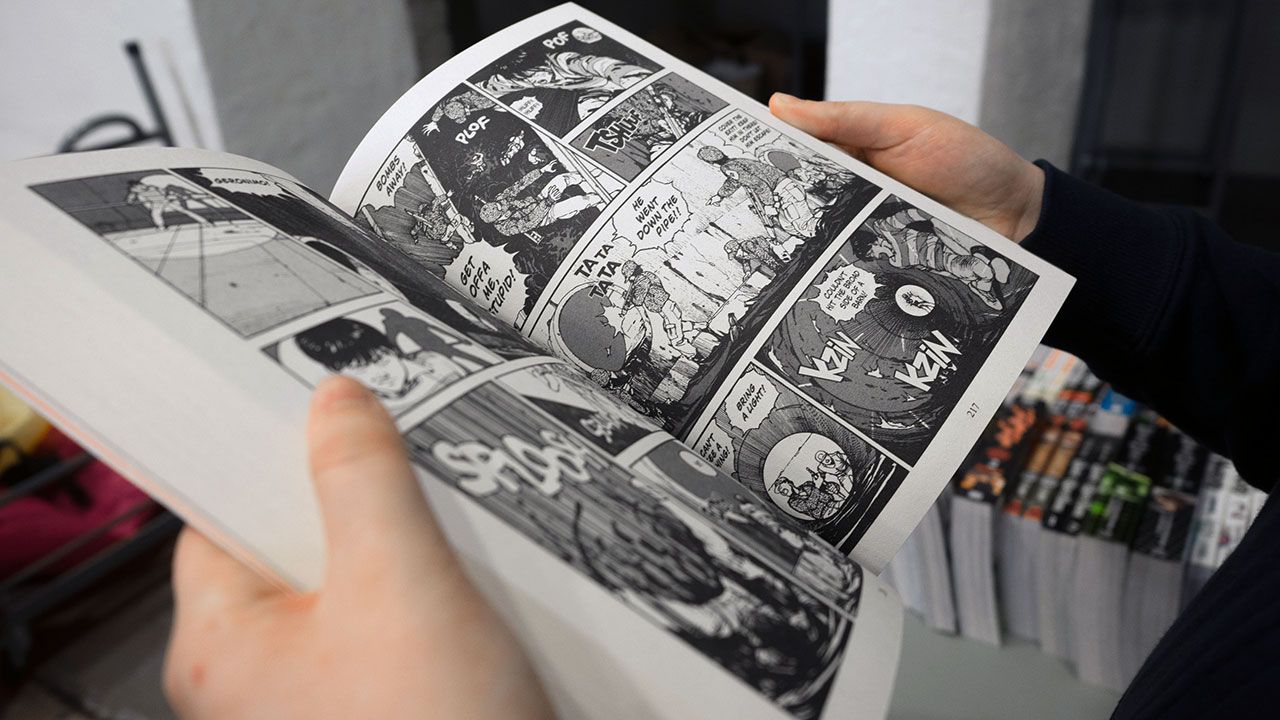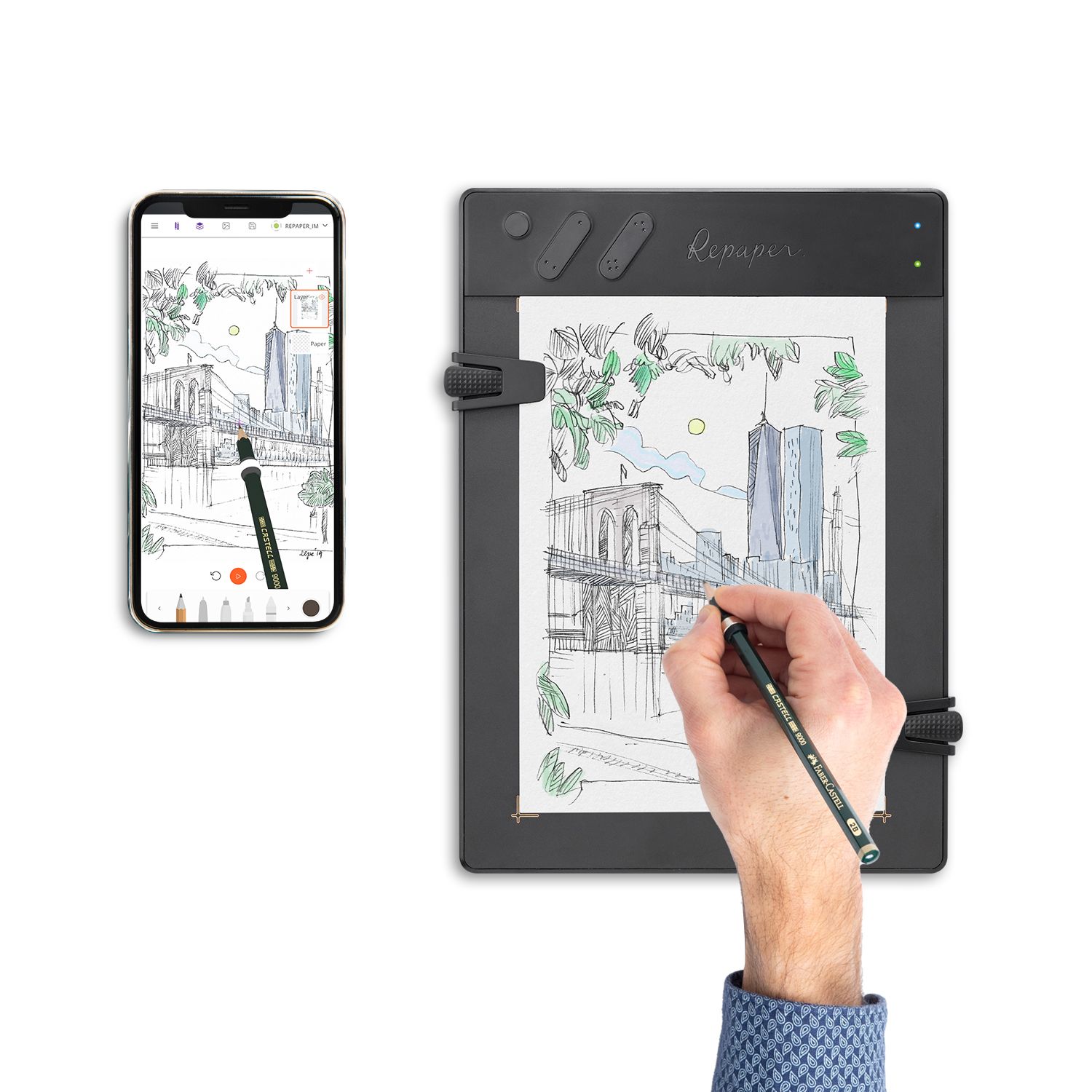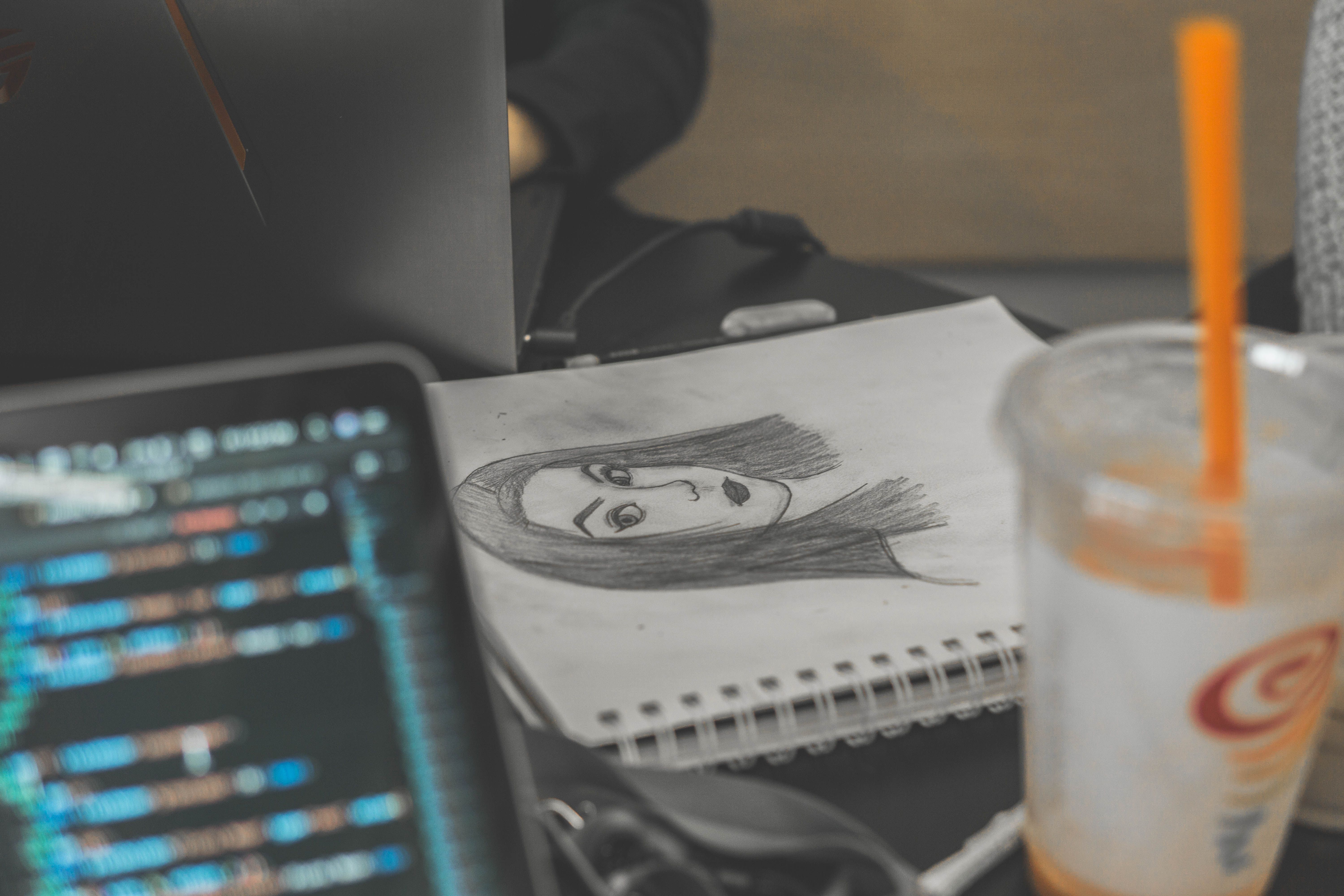
How to create a Manga? Tools, Techniques, and Digital Mastery
Manga has been popularized all over the world through mythical works such as Dragon Ball, One-Piece or Naruto, and many beginners want to learn drawing in order to create their own Japanese comic books. These comics use specific codes, and remain a genre where the drawing style is rather traditional. But nowadays, computers can really make the task of the illustrators easier, and by picking the right tools, you can quickly produce quality mangas, while taking advantage of the power of digital. In this article, we will guide you on the different peripherals and software to select, but also on the technique to realize a great manga.
Manga: How technologies serve a traditional genre.
Drawing tablet, really customizable for manga drawing.
Japanese comic books are a format used to tell stories for several hundred years. They have therefore developed very traditional codes, and still many mangakas draw manga with traditional techniques, often with just a pencil and a dedicated felt-tip pen for inking. However, due to the popularity of Japanese manga around the world, the production pace has increased, and it has become easier for the artist to use computer tools. Many beginners in the drawing learning phase are also very much inspired by manga for their practices, and sometimes want to keep track of their first drawings or share them on social networks. To do this, the graphic tablet can become an ally of choice to draw more rapidly, and to save their creations in computer format so that they can be shared with a large audience. However, whether it is the accomplished artist in the domain of Japanese drawing or for beginners, using a stylus, or having to practice an unnatural hand-eye coordination (the eyes track a computer screen instead of the movements of the hand when drawing in a traditional way), is a real obstacle to using these tools.

That's why choosing the right tablet is essential to avoid feeling overwhelmed by all the new drawing techniques you have to learn. With a drawing tablet like the ISKN Repaper, you can, for example, place a sheet of paper directly on the tablet's work surface, and thanks to a magnetic ring, to be placed on your favorite pencil or pen, and magnetometers within the tablet, it will detect the movements and the tilt of your drawing material, and will allow you to draw on paper, as you would have done on a traditional drawing board. You can use the advantages of digital drawing, with the shortcuts and all the options of the graphic software you use, while keeping the comfort and the natural feel of the pencil, more than recommended for this art form that uses simple lines that must be precise and fast to draw.

Graphic software has become almost indispensable.
If you have decided to go digital, using the right graphic software is of utmost importance to create a nice manga. The graphic software allows you to quickly produce your boards, especially thanks to the layers allowing you to draw your storyboard on one, your drawing on a second, and your inking on the third. The good use of layers, by leaving some or the others in transparency, will make you save a lot of time for the various stages of your creation. You can also, with a specialized software for comics like Clip Studio Paint or Krita, have boxes, bubbles, and predefined board formats, which will speed up your layout work. Finally, mangakas frequently use traditional tools to create the grayscale effects of their mangas. These specific tools, called screens, give all the charm to the manga, and are often pre-cut in paper format, adjusted with a cutter and applied on the drawing in order to create gradations, color sensations thanks to grayscale (the more the grayscale effect tends to white, the lighter the color supposed to be represented will be, and vice versa), or even to apply ready-to-use background sceneries. These screens, so important in the manga universe, now exist in digital format, and thanks to graphic software and specialized websites, you can obtain several hundreds of them, all more original than the others, which would have cost you a fortune if you had wanted to obtain them all in paper format. Software has become a great ally, as long as you choose the one adapted to your use.

Stages of manga creation.
Differences with comics.
Although manga are nothing more and nothing less than Japanese comics, many differences are visible with western comics, both in the construction and in the way of drawing. First of all, the way of scripting a manga is totally different from the comic book. When the latter will propose to the reader an original story, including a beginning, a middle and an end, the Japanese manga will be published in several books each including several chapters. The story can then go on indefinitely as one could see it in some cartoon series or in American comics. The second big difference is the reading direction which is from right to left. It may indeed be surprising for the uninitiated to see that the end of the book is located on the left page of the cover. It is the same for the reading of the bubbles and the boxes inside the volume which is done in the opposite direction to the Franco-Belgian comics. Finally, the drawing techniques are totally different. When in a comic strip, notably for the realistic graphic novel, the details and the colorization are of stake. The mangaka will seldom carry out detailed decorations and drawings. The publication will be almost entirely in black and white. This particular style has been defined as a standard, especially because, for many mangas, it meets an intensive production demand, the manga chapters being published at a frantic pace in biannual magazines, published in millions of copies. The illustrator of manga is more and more assisted by an assistant who realizes the decorations of his illustrations.

Create the script.
To draw a manga, you must first deal with the scenario and the intrigue before starting your first sketches. As we have seen before, unlike a classic comic book, the story of a manga book does not specifically have a beginning or an end. This one is only an additional content to enrich a narrative arc, generally composed of several books, and to advance the story. So you have to think about the writing of your manga as you would for a serie. If you have to know the main outline in order to know where you are going, it is quite possible to leave room for improvisation, as this format does not limit you to a limited number of pages. You just have to keep a coherence between each volume and write them with a continuity so that the reader doesn't get stuck in the middle of a dialogue when he arrives at the end of a book.
Define pagination.
To learn how to draw manga easily also requires organizing the pagination beforehand. To create a manga that is pleasant to read for the reader, you have to think about the positioning of the boxes and the illustrations on the right pages of the book. Let's imagine that you want to integrate a cliffhanger followed by a drawing that will give an incredible surprise effect to the reader. It is then interesting that the reader turns the page to discover that drawing. If you don't pay attention to this positioning detail, and the drawing is on the left page (remember that manga is read from right to left), when the reader reads the right page, his peripheral vision will already see the drawing that is supposed to be a surprise, and the surprise won’t happen. In the same way, it is common in the manga genre to draw large illustrations stretching over two pages. It would be a pity if you made a bad pagination and the drawing is cut in half if printed on both sides of the same page. To avoid such inconveniences, it is interesting to place the elements of your scenario directly on the pages, so that the drawings to be made afterwards are in the right place in terms of pagination. It can sometimes be complicated to coordinate everything completely, and that's why in a lot of Japanese comics, we can see transition pages at the beginning or end of the chapter, often white or sometimes with a small graphic illustration at the bottom of the page.

Create your own boards.
Once your script has been paginated, you can create the boards and boxes that will hold your drawings. If the format of standard comics is quite standardized with three or four lines composed of rectangular or square boxes, manga offers much more freedom with boxes of different formats, rectangular, but also oblique, and even if the principle of a maximum of four vertical lines applies, you can happily exceed this number, especially to finish a book without adding too many pages. If most of the time rectangular boxes are used in the manga, especially for simple dialogue scenes, oblique boxes are regularly used to give an impression of dynamism, especially during fights or moments representing a strong emotion. You should not hesitate to multiply the boxes, to dissect an action as if you were taking each frame of a video. The small oblique vignettes will be synonymous of specific and fast actions, while the large rectangular boxes propose a moment extending in the duration, or to show a landscape. It is also common to see a box extending over one or two pages to emphasize the importance of a particular scene. The division of your squares must be done taking into account the board as a whole. You can mix small and large boxes in an order that may seem anarchic to the uninitiated, but it actually lets emotions and dynamism appear that you can't have in traditional comics that rely more on the still image. Finally, always make sure that one panel is not identical to another. Thus, the reader will not have the feeling of reading the same page again.
Create a storyboard.
Then comes the time of the storyboard. This is where your script comes to life. This is the time when the illustrators can start to take out their pencils and draw characters. This is also a good time for them to get creative and refine their script by adding a few more drawings or dialogues. It is important to understand that the storyboard is the basis for the final drawing, and is a preview of what your manga will look like. When you draw a character in a storyboard, although the proportions of the anatomy of the character are respected, the facial expressions must remain simple and you must not focus on details such as the background or the accessories. This storyboard can take place in the predefined boards in order to see if your pagination is really correct before drawing and inking your work.

Draw and ink your drawing.
Everything is in place, all you have to do is to create drawings to finalize your work. The graphic style of manga drawing is quite particular, and with its simple lines, it seems accessible even to the beginner who is learning to draw. It is indeed true that knowing how to draw manga does not require you to go to art school or to take regular drawing classes, especially since authors are assisted by seasoned artists, but learning the basics of drawing is a significant plus, if only to understand perspectives and to draw illustrations easily with an eye-pleasing rendering, and thus use one's energy to develop one's own style. Once you are comfortable with this, grab your drawing material, or your graphic tablet and your software, with the right brush, and start working on your storyboard in order to materialize your drawings in a more detailed way. The advantage of the drawing tablet is that you can use a layer to take your storyboard and draw over it in the software. This will save you a lot of time, especially if you have a graphic tablet like the ISKN Repaper, which allows you to keep the sensations of drawing on paper. Finally, change your brush to a suitable digital marker and ink your drawing to have clean and precise lines. Do not color your drawing, your work is finished. The norm in this style of drawing is to publish it in black and white.
Making a manga has become accessible to everyone.
The manga, although traditional, can be made by anyone, as long as the basic drawing skills are mastered and that a certain rigor in the organization of the drawing is applied by the illustrator. Also, the tablet and the graphic software can now be a precious help to realize drawings more efficiently and to publish them to the largest number of people. All you have to do is to train yourself, and maybe be published by Kana or Delcourt in the future.

Discover more
How to create a comic book with a graphics-tablet?
If the Americans have their comics and the Japanese their mangas, when talking about comics, we first think of the great French-Belgian comics
How to Make a Cartoon: From Traditional Drawing to Digital.
Discover the techniques and steps to make perfect animations to create smooth and professional cartoons.
How to draw caricatures: techniques for creating humorous drawings.
From the history of caricature, to the tricks to make them, discover the specificities of this particular art to draw your most beautiful caricature.
Newsletter
Keep up to date with iskn news and events
Free standard delivery
for purchase over $80
30-day returns
on all products
Secure payment
with Stripe & PayPal
Pay in 4
with PayPal
Customer service
chat with us


